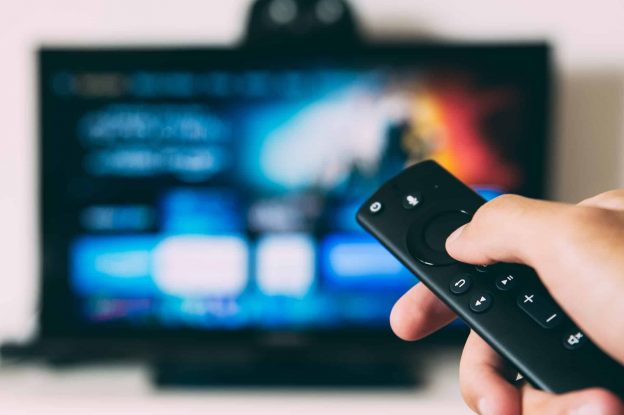The surge of video streaming services like Hulu, Netflix, and Disney+ has made streaming an indispensable part of our entertainment routine. To ensure a smooth and uninterrupted streaming experience, understanding the appropriate internet speed is vital. This article delves into the recommended internet speeds for different video qualities, offers insights on enhancing your streaming experience, and provides essential tips for selecting the right internet plan to meet your streaming requirements.
Related Link: How To Switch Internet Providers: Simple & Easy Guide
Understanding Internet Speed for Streaming
Internet speed is quantified in megabits per second (Mbps), representing the rate at which your computer can download or upload data. The internet speed required for streaming is mainly contingent on the video quality you prefer. Here’s a detailed breakdown of the recommended internet speeds for various video qualities:
- Standard Definition (SD – 480p): 3+ Mbps
- High Definition (HD – 720p to 1080p): 5–13+ Mbps
- 4K or Ultra-High Definition (UHD – 2160p): 16–25 Mbps
For music streaming, a speed of 1–10 Mbps is adequate. Nevertheless, it’s crucial to take into account factors beyond individual streaming devices, such as the number of users and devices connected to your Wi-Fi network. In cases of multiple users and devices, opting for a higher internet speed becomes necessary to ensure seamless streaming for everyone involved.
Want to find out more about your Internet options? Visit us at VMedia to see what’s available near you.
The Importance of Upgrading Your Internet Plan
Ensure that your chosen internet plan can adequately accommodate your streaming requirements to optimize your streaming experience. Despite impressive download speed claims from your ISP, buffering issues can arise if the bandwidth isn’t sufficient to support multiple devices simultaneously. Therefore, before finalizing a plan, consider the number of users and the types of media they will be streaming to ensure a smooth and uninterrupted streaming experience.
Various streaming platforms have specified minimum speeds for different video qualities to ensure a smooth viewing experience. For standard definition SD video streaming at 480p, a recommended minimum speed of 3 Mbps is provided. If you prefer high definition HD video streaming at 1080p, the advised minimum speed is 5 Mbps. For those seeking the ultimate viewing experience with 4K video streaming at 2160p, a required minimum speed of 25 Mbps is set. These speed guidelines are designed to ensure quick video loading and uninterrupted playback, delivering users the best streaming quality for their selected content.
It’s advisable to aim higher than these minimum requirements, especially if you have multiple devices or plan to stream in UHD. An internet plan with speeds between 50 Mbps to 100 Mbps is generally sufficient for most households, providing a comfortable buffer for streaming and other online activities.
Improving Your Streaming Experience

If you’re experiencing buffering issues despite having a high-speed internet plan, consider these tips to enhance your streaming experience:
- Upgrade Your Equipment: Outdated modems or Wi-Fi routers may not be able to handle higher internet speeds. Consider upgrading to the latest equipment to support faster connections and reduce buffering.
- Reposition Your Router and Its Antennas: The placement of your router can significantly impact Wi-Fi coverage throughout your home. Position it in the center of your home, away from electronic devices and appliances, and elevated on a shelf or mount for better coverage.
- Update Your Router’s Firmware: Keeping your router’s firmware up to date ensures better performance and improved security. Check for firmware updates regularly within the router’s administration panel.
- Reset Your Router: Resetting your router occasionally can help refresh your internet connection and resolve speed issues. You may consider resetting your router once a month or even more frequently if you encounter persistent speed problems.
How to Test Your Internet Speed
Prior to commencing your streaming session for beloved TV shows and movies, it is crucial to assess your internet speed and reliability. Conducting a straightforward speed test enables you to easily ascertain the actual download and upload speeds delivered by your ISP. By performing this test, you can ensure that your internet connection is up to par for smooth and uninterrupted streaming. The results of a speed test can indicate whether or not an upgrade is needed to accommodate your streaming needs within your current plan.
You can find various online tools and websites that offer speed tests for free. Some popular options include Ookla’s Speedtest, Fast.com by Netflix, and Google’s Measurement Lab (M-Lab). These tests typically measure your ping (latency), download speed, and upload speed.
Here’s how you can run a basic internet speed test:
To run a basic internet speed test, follow these steps for accurate results: Close all applications and devices using the internet to ensure accuracy. For reliable results, connect your device directly to the modem using an Ethernet cable. Alternatively, if using Wi-Fi, improve your connection by moving closer to the router. Initiate the evaluation by clicking the “Go” or “Start” button on a reputable speed testing website like Speedtest.net. Upon completion, the test will display your ping, download, and upload speeds. If your connection speed meets the requirements for your desired video quality, you can stream videos smoothly. However, if the speeds fall below expectations, consider upgrading your internet plan or network infrastructure to resolve the issue.
Related Link: How to Choose the Right Internet Plan
Troubleshooting Internet Speed Issues
If the results of the speed test show that your internet connection is slower than usual, you can take the following measures to fix the problem and enhance your streaming experience:
- Check for Background Downloads: Ensure that no other devices or applications are consuming significant bandwidth while streaming. Background downloads or updates on other devices can impact your available bandwidth.
- Close Unused Applications: Close any unnecessary applications on your device to free up resources for streaming. Running multiple applications simultaneously can strain your internet connection.
- Optimize Your Wi-Fi Network: Improving your Wi-Fi network is essential for seamless streaming. If your streaming device is connected via Wi-Fi, take steps to optimize your network. Reposition your router to ensure better coverage, eliminate potential sources of interference, and avoid overcrowded Wi-Fi channels. These adjustments will enhance your overall streaming experience by providing a more reliable connection.
- Use Ethernet Connection: Alternatively, for the utmost stability and consistency, consider using an Ethernet cable to directly connect your streaming device to the router. An Ethernet connection offers a dedicated and reliable pathway for data transmission, reducing the chances of buffering and interruptions during streaming sessions. By utilizing an Ethernet connection, you can enjoy smooth and uninterrupted streaming of your favorite content with ease.
- Contact Your ISP: If you consistently experience slow internet speeds, contact your internet service provider to troubleshoot the issue. They can check for any technical problems on their end or suggest possible solutions.
By following these troubleshooting steps, you can identify and resolve internet speed issues, ensuring a smooth streaming experience for all your favorite shows and movies.
Have any questions about your internet options? Contact us for assistance!
Embracing Buffer-Free Streaming

For a seamless streaming experience, consider crucial factors like video quality, the number of users, and device connectivity to achieve the ideal internet speed. By selecting the right internet plan and upgrading your equipment, you can enjoy uninterrupted streaming of your favorite shows and movies, providing a delightful entertainment experience for everyone. Regularly checking your internet speed, updating firmware, and strategically positioning your router can further enhance your streaming experience, ensuring a buffer-free environment in your home.
Related Link: What to Do During an Internet Outage

